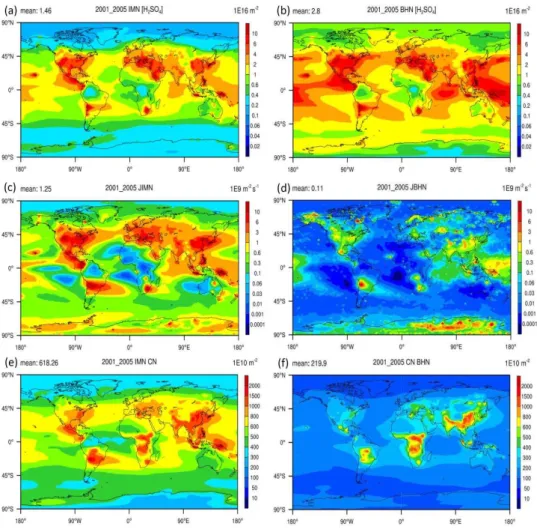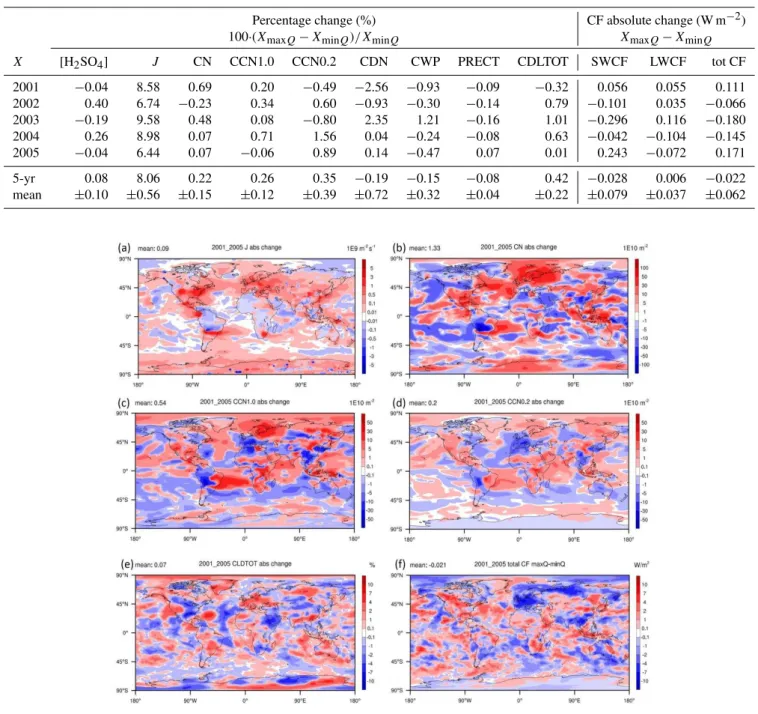Indirect radiative forcing by ion-mediated nucleation of aerosol
Texto
Imagem
![Table 1. Globally averaged sulfuric acid vapor concentration ([H 2 SO 4 ]), nucleation rate (J ), concentrations of condensation nuclei (CN) and cloud CN at water supersaturation ratio of 1.0 % and 0.2 % (CCN1.0, CCN0.2), cloud droplet number concentration](https://thumb-eu.123doks.com/thumbv2/123dok_br/16422617.195372/4.892.139.752.247.596/globally-averaged-concentration-nucleation-concentrations-condensation-supersaturation-concentration.webp)


Documentos relacionados
Both the ability of an aerosol particle to act as a CCN at a given S level and its contribution to extinction depends on the aerosol particle size distribution. Particle size is
The C-ToF-AMS usually has two di ff erent operational modes: (i) the MS (Mass Spectrum) mode which is used to collect averaged mass spectra of the non-refractory aerosol and can
The C-ToF-AMS usually have two different operational mode: The MS (Mass Spectrum) mode which is used to collect averaged mass spectra of the non-refractory aerosol and can provide
P ¨oschl, U.: Aerosol- and updraft-limited regimes of cloud droplet formation: influence of par- ticle number, size and hygroscopicity on the activation of cloud condensation
nuclei ( N CCN ) to the total number concentration of particles ( N CN ), known as the acti- vated fraction A , shows a similar functional dependence on supersaturation S at
With the exception of the nucleation mode, particle number and volume concentration cycles are very similar to the cycles of aerosol optical properties and mass concentrations..
In Mace Head the concentrations of the nano-CN and the cluster ions, even together, are too small to account for the observed formation rate of the nucleation mode particles. Thus
In our previous studies (Benson et al., 2008; Young et al., 2008), we reported the residual [H 2 SO 4 ] (measured at the end of the nucleation reactor) and further used the